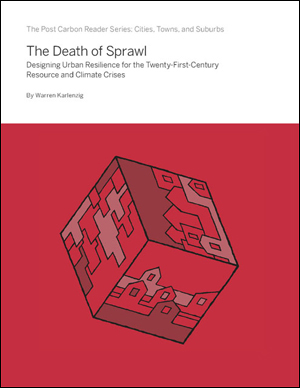
The Death of Sprawl
June 23, 2010
In April 2009—just when people thought things couldn’t get worse in San Bernardino County, California—bulldozers demolished four perfectly good new houses and a dozen others still under construction in Victorville, 100 miles northeast of downtown Los Angeles.
The structures’ granite countertops and Jacuzzis had been removed first. Then the walls came down and the remains were unceremoniously scrapped. A woman named Candy Sweet came by the site looking for wood and bartered a six-pack of cold Coronas for some of the splintered two-by-fours.
For a boomtown in one of the fastest-growing counties in the United States, things were suddenly looking pretty bleak. The adobe-colored two-story houses had been built by speculators in a desert region dubbed the “Inland Empire” by developers. The unsold homes faced vandalism and legal liabilities when the town’s average home sales prices dropped from well over $300,000 in 2007 to $120,000 in 2009. These plummeting prices pushed Victorville over the edge, making the city one of the nation’s foreclosure capitals.
After people began to ransack fixtures from the vacant homes, Victorville town officials warned the bank owning the sixteen-home development that it would be on the hook for security and fire calls. The bank, which had inherited the mess from the defaulted developer, assessed the hemorrhaging local real estate market and decided to cut its losses. A work crew was dispatched to rip the houses down and get what they could—money, beer, whatever—for the remains.
This is a chapter from The Post Carbon Reader: Managing the 21st Century’s Sustainability Crises (2010).
